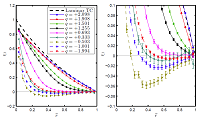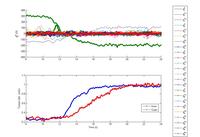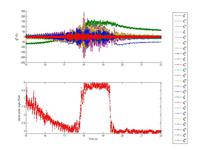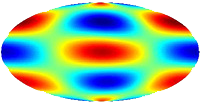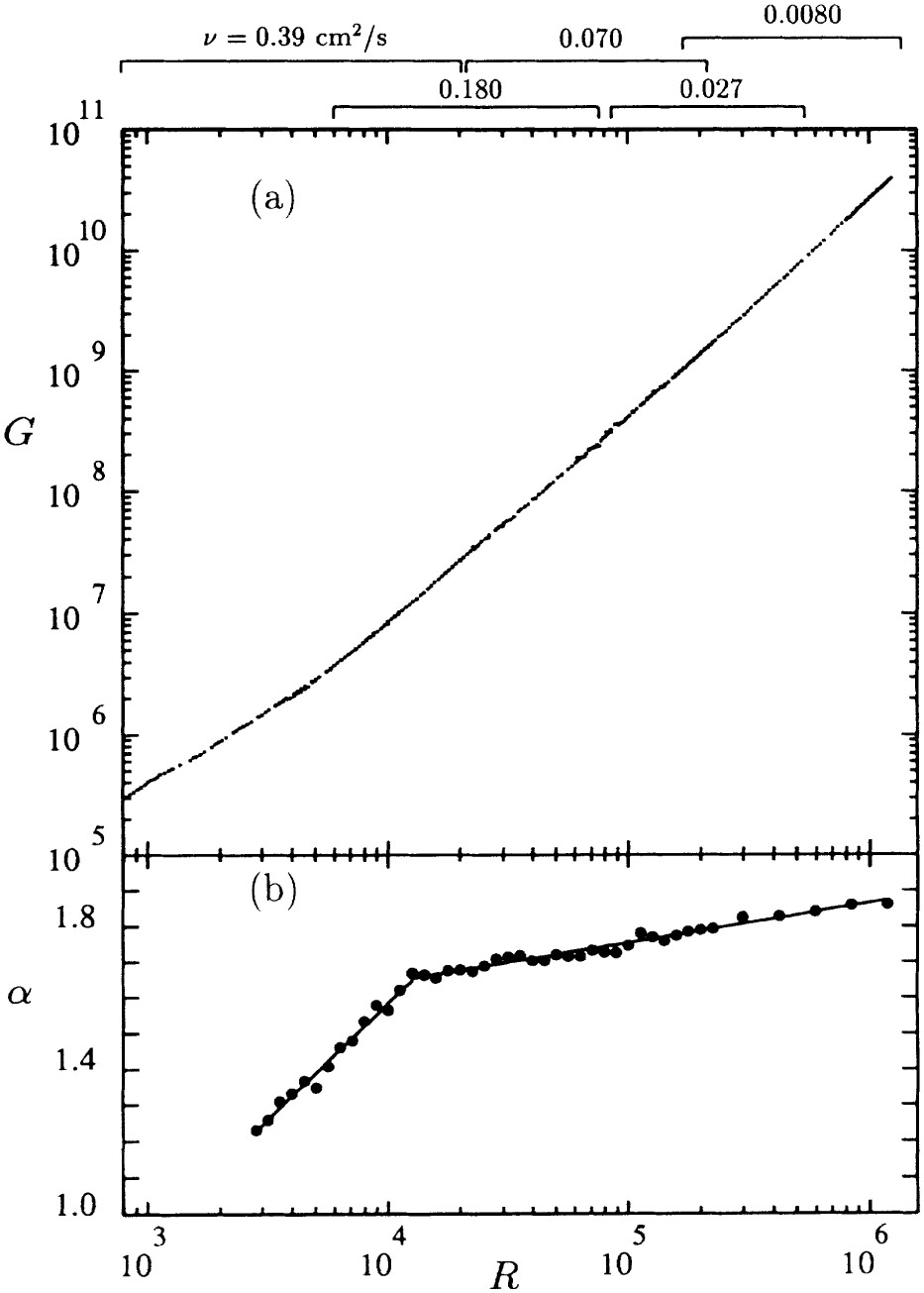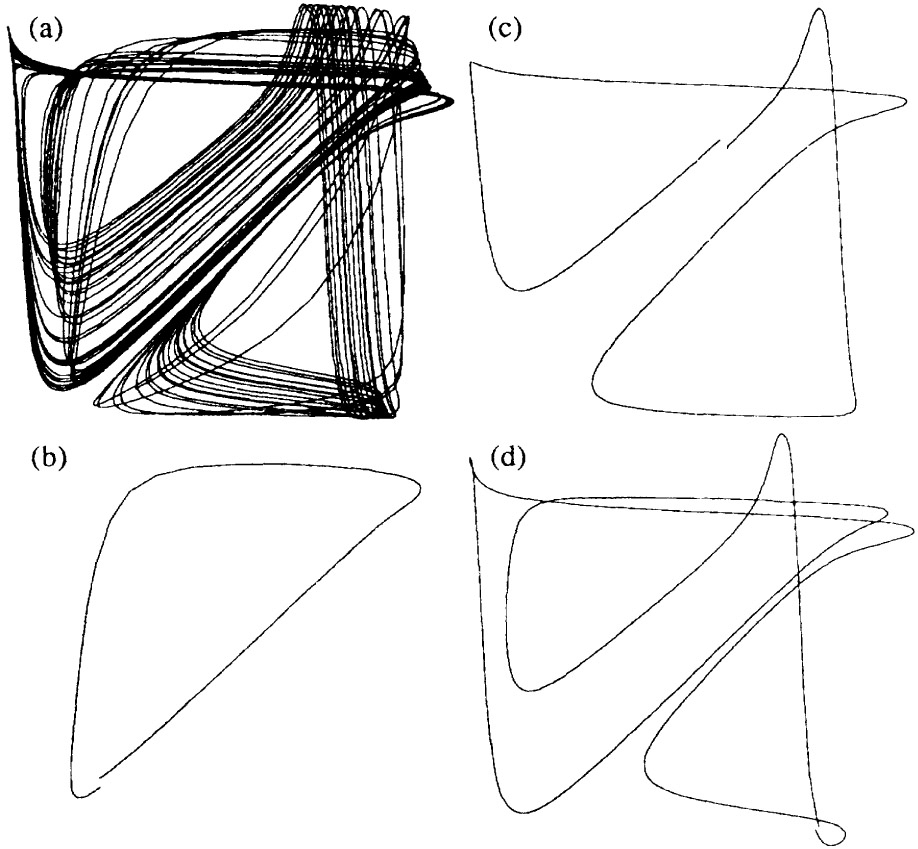Here we present an archive of historical experimental data with the hope that it may prove useful to the scientific community. You are encouraged to examine and explore the data freely, and we ask only that in your use of this data, you make appropriate citation (publications are listed with each data set). We are always interested in scientific conversation and collaboration, so please contact us with your questions or comments.
Azimuthal velocity measurements from a collaboration with the Physics of Fluids Group at the University of Twente, the Netherlands, on the Twente Turbulent Taylor-Couette T3C. Azimuthal velocity profiles (radial and axial) taken when the experiment was operated in the Rayleigh-stable regime. The Taylor-Couette experiment has axial boundaries attached to the outer cylinder, a radius ratio 0.7245, and an aspect ratio of 11.47. The data, which is a copy of the supplementary data for the cited paper, contains the radial profiles of the azimuthal velocities across the whole gap at one height, the radial profiles across the outer half of the gap at several different heights, and axial profiles at midgap over the bottom half of the experiment. Preprints of the paper can be found at arXiv:1408.1059 [physics.flu-dyn].
D. H. Kelley and D. P. Lathrop; unpublished.
Measurements of magnetic induction from our 60cm spherical Couette experiment with soft iron inner sphere, showing a reversal in the g30 mode and a corresponding jump in motor torque. Liquid sodium between spinning inner and outer spheres interacts with an applied magnetic field to produce magnetic induction, which is represented as a time series of Gauss coefficients. Motor data are also included; the torque traces suggest a noisy Hopf bifurcation. Experimental parameters: inner sphere -38.9 Hz, outer sphere 4.6 Hz, applied field 210 G.
D. H. Kelley and D. P. Lathrop; unpublished.
Measurements of magnetic induction from our 60cm spherical Couette experiment with soft iron inner sphere, showing broadband bursts of magnetic induction and dipole alignment with the axis of rotation. Liquid sodium between spinning inner and outer spheres interacts with an applied magnetic field to produce magnetic induction, which is represented as a time series of Gauss coefficients. Experimental parameters: inner sphere 33.4 Hz, outer sphere 2.8 Hz, applied field 367 G.
D. H. Kelley and D. P. Lathrop; unpublished.
Measurements of magnetic induction from our 60cm spherical Couette experiment with copper inner sphere, showing an inertial mode with degree 3 and order 1 in the magnetic induction. Liquid sodium between spinning inner and outer spheres interacts with an applied magnetic field to produce magnetic induction, which is represented as a time series of Gauss coefficients. From this induction we infer the presence of an inertial wave mode. Experimental parameters: inner sphere -3.2 Hz, outer sphere 18 Hz, applied field 124 G.
Lathrop, Fineberg, and Swinney, Phys. Rev. A 46 6390 (1992).
Lathrop, Fineberg, and Swinney, Phys. Rev. Let. 68 1515-1518 (1992).
Lathrop, Fineberg, and Swinney, Phys. Rev. Let. 68 1515-1518 (1992).
Torque measurements from a Taylor-Couette experiment at Reynolds numbers 103 < Re < 106, showing no scaling of torque with Re but showing scaling of various other quantities with torque. A non-hysteretic transition is observed at Re = 1.3 x 104.
Lathrop and Kostelich, Phys. Rev. A 40 7 (1989).
Roux, Simoyi, and Swinney, Physica D 8, 257 (1983).
Coffman, McCormick, Noszticzius, Simoyi, and Swinney, J. Chem Phys. 86, 119 (1987).
Roux, Simoyi, and Swinney, Physica D 8, 257 (1983).
Coffman, McCormick, Noszticzius, Simoyi, and Swinney, J. Chem Phys. 86, 119 (1987).
Measurements of bromide ion concentration during an oscillating Belousov-Zahabotinskii (BZ) reaction in a continuously stirred tank. The data were used to reconstruct a chaotic attractor in phase space and to locate periodic orbits in that attractor.

